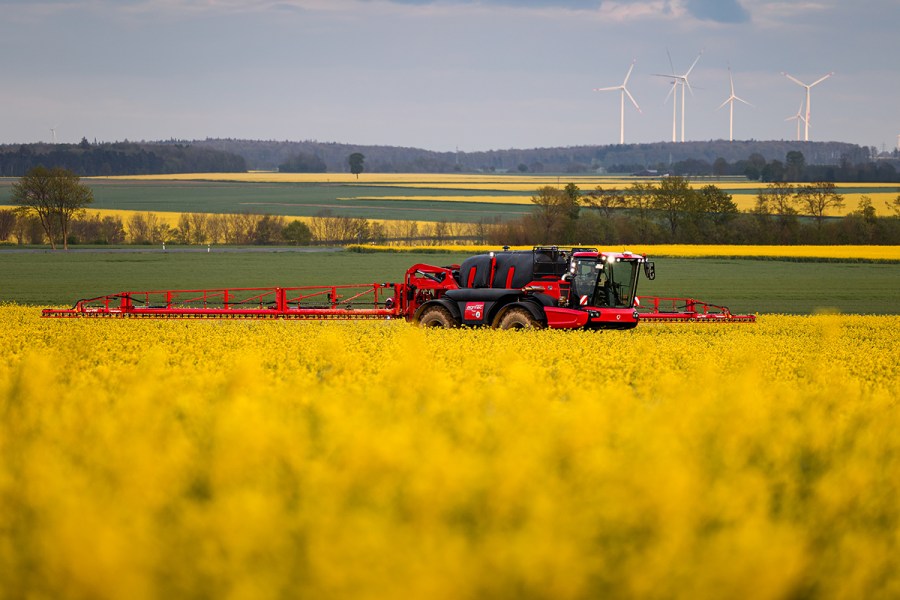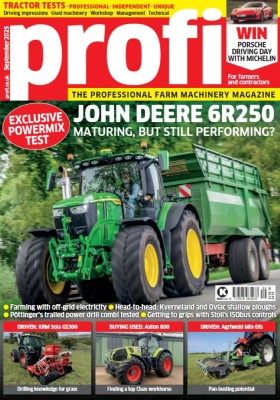Self-propelled sprayer capacity in the UK is on the increase as farms strive to do more in each working day. We take a look at these acre eaters and find out what’s new in the self-propelled market.
Sprayer capacity continues to grow, with a wide choice of self-propelled machines over 5,000-litres now available. The drive to maximise output in increasingly challenging conditions has to be tempered by the suitability for the farm and its terrain, with manufacturers suggesting that customers are increasingly looking to technology to help ensure that chemical – and in many cases fertiliser – gets to its target in a timely, cost-effective way.
At this volume, operators have a good choice of self-propelled or trailed machines, and John Deere’s sprayer specialist Mark James comments that some farms have switched strategy to make better use of a costly tractor in recent years, and large trailed machines are on the increase, mainly at the expense of smaller sprayers.
“But we do find that self-propelled machines are very much holding their own. Updating the sprayer is often a strategy of planned replacement, generally after four to five years, and to take advantage of the latest technology as well as increasing capacity.”
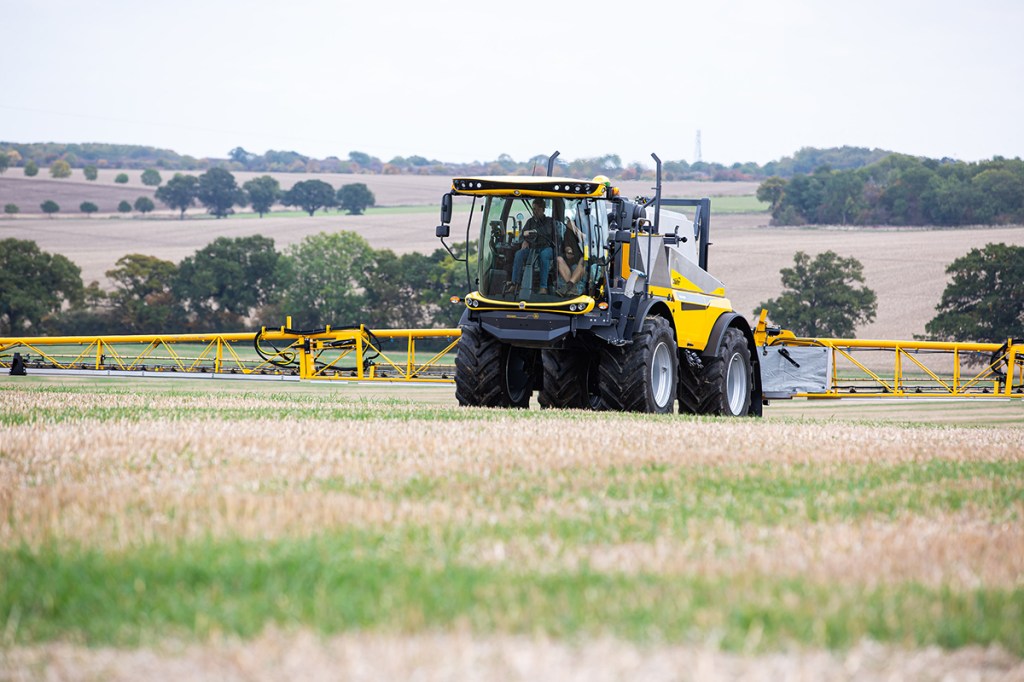
Ant Risdon, product specialist at Fendt agrees: “A self-propelled sprayer will do a lot of hours per year, most are changed as part of a plan. We offer up to eight years warranty enabling customers to run their machines for longer should they need to.”
In many cases when machines are replaced, customers will take the opportunity to improve on the specification of the machine, suggests Joe Allen, sales and marketing manager at Chafer Machinery. “Whether that’s upgrading to a transmission system such as the Bosch Rexroth CVT and moving away from a rotary piston pump or improving application accuracy through systems such as Pulse Width Modulation or our EPlumbing setups. Rarely is the opportunity missed to take advantage of new technology to increase accuracy, reduce downtime or improve the operator experience.”
He adds that the company has seen replacement periods being pushed out. “Customers are taking out extended warranty packages and service contracts, ensuring machines remain in good working order through their working life.”
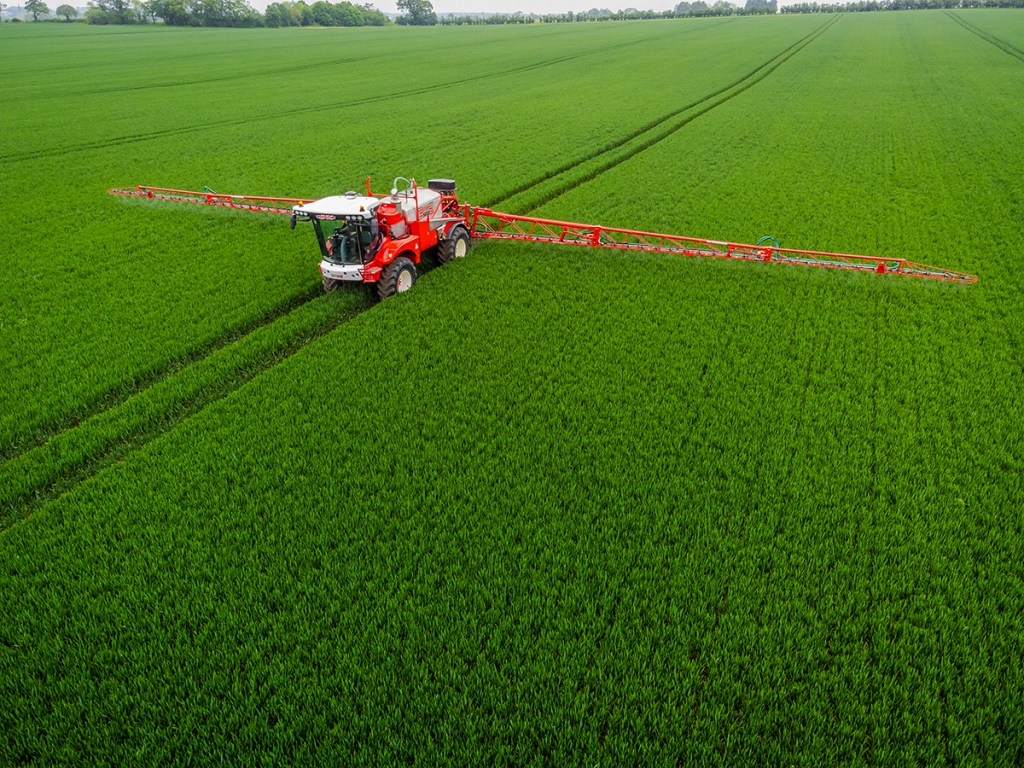
David Main, technical sales manager at Bateman Sprayers says: “I think the larger farms and some contractors are looking for more capacity due to the ever-increasing workloads and timeliness of applications which higher capacity machines can provide. We are seeing them lean more towards higher specification with virtually every machine now being supplied with GPS section control. Full auto steer and Capstan PWM with their many benefits are also proving to be popular options.”
The main restriction for self-propelled sprayer output is conditions, suggests Ant. “To maximise ‘spray days’ we use drift reduction technology called Opti Nozzle. This is where the machine automatically selects nozzle combinations relative to forward speed – allowing optimum nozzle pressure (therefore drift reduction) to be maintained as forward speed changes. Spray height is optimised at 50cm by our Opti Sonic ultrasonic boom levelling system.”
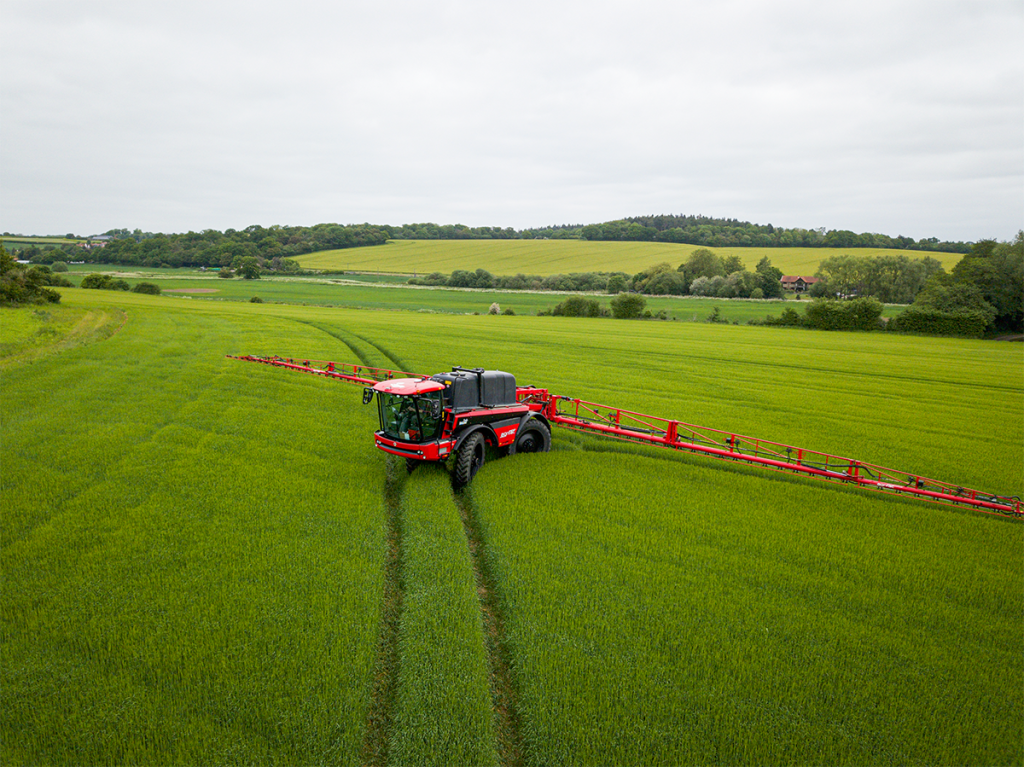
Tank volume
Amazone’s managing director Matt Smith comments that increased tank volume is high on the shopping list with customers looking for more capacity. “With a nominal tank capacity of 6,600-litres, the Pantera 7004 is the choice for those who have already seen the benefits of the smaller Pantera 4504 but now want more capacity in the tank.
“There is a base cost to any SP irrespective of tank size, so in terms of cost per litre, a larger capacity machine is often a better buy than one half its size and provides the customer with the comfort of knowing that they are future-proofing themselves. The design of the Pantera 7004 means that its empty weight is only about 1.6 tonnes more than our smaller Pantera 4504 model, spread this over four wheels and tyres, which are larger in diameter and therefore give a larger footprint, and the difference is negligible.”
Joe Allen comments that capacity is increased where required, for example if a customer is starting to use liquid fertiliser, or they are spraying an increased area, but counters: “Some businesses ae settled on the capacity they require so replace like for like, as it comfortably covers blocks of land and cropping requirements.”
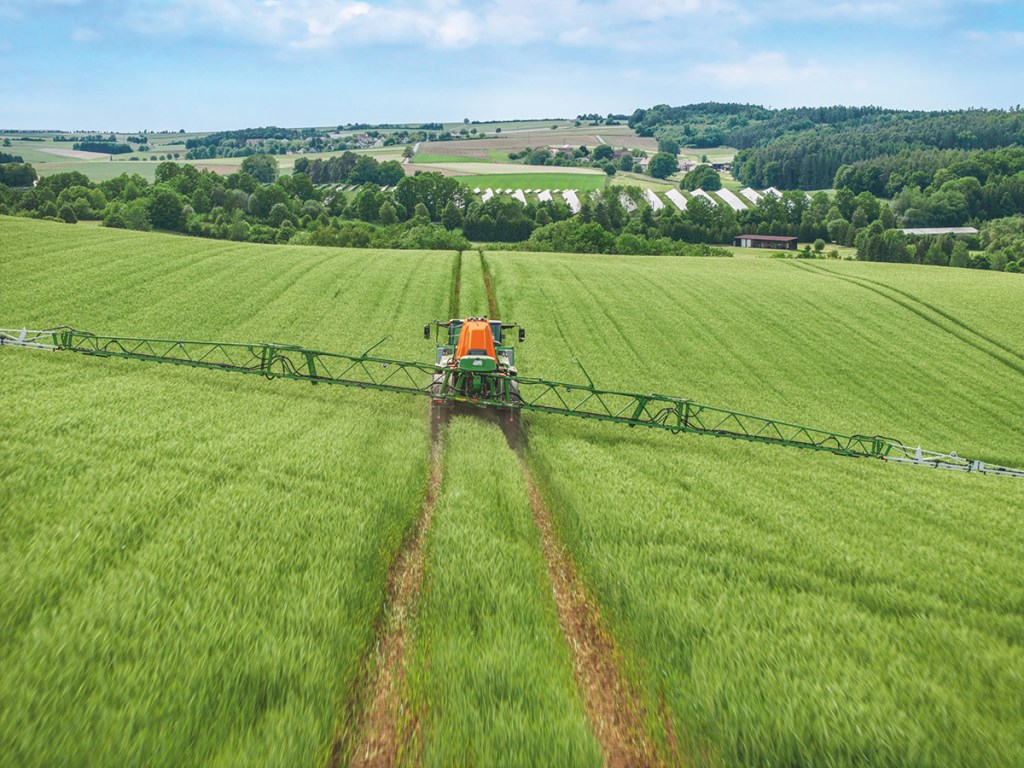
Technology
Mark James suggests that the opportunity to take advantage of emerging technology is a driver to invest in a new machine.
“Individual nozzle control is almost universally specified on our self-propelled machine, although it is taking longer for PWM to be adopted. Boom height control is another popular feature.”
Matt Smith adds: “Many chemical manufacturers suggest improving efficacy through the use of application rates of 200 litres/ha or more. These higher water rates mean that a larger tank is required in order to maintain a good level of output. We cater for this with our AmaSelect 25cm nozzle spacing offset kit; the use of which means that an 025 or 03 nozzle can be fitted at 25cm spacing which will allow for a 200 litre/ha application rate at normal spraying speeds. With 25cm spacing, we are doubling the number of nozzles but halving the size of them, so the droplet size and therefore coverage is greatly improved compared with a 05 nozzle at 50cm.”
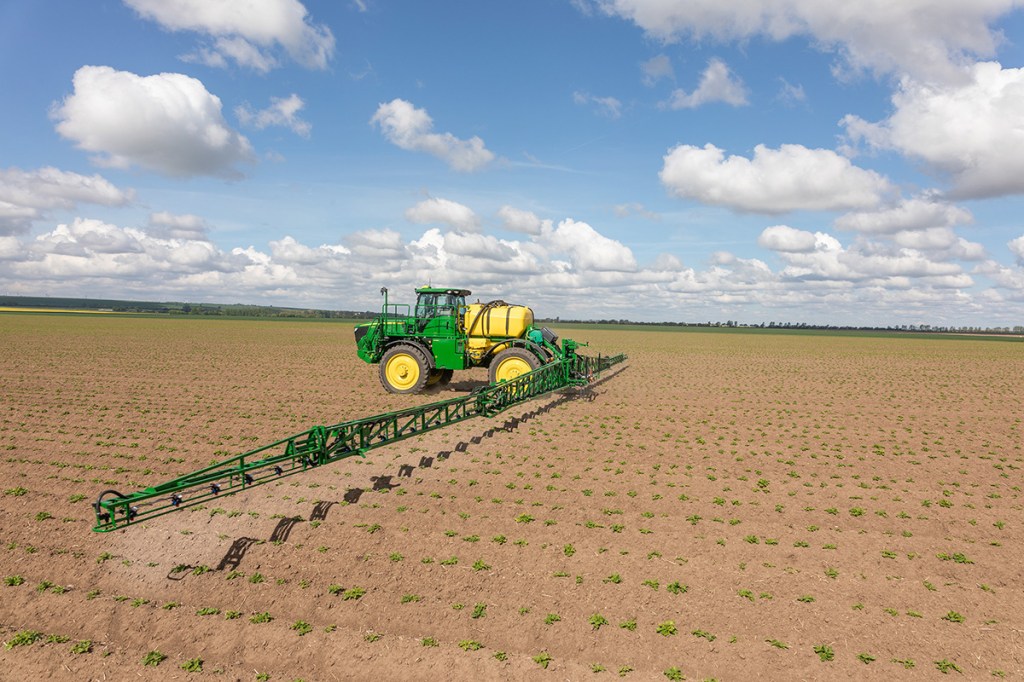
Other considerations
Capacity is not only about bigger tanks, Matt points out: “In some cases, extra capacity could be more effectively achieved by an increase in boom width, a trend we also notice with our customers. It might also be found by streamlining the filling operation, with a well laid-out sprayer filling area, pre-mix chemical bowsers transporting chemical to the field. A high capacity filling pump, available on all Amazone Pantera machines, is instrumental in this; we also offer an induction hoper that can induct chemical at 200litres/min.”
Ant Risdon also highlights the operator’s role: “Operator comfort is essential – Category 4 cab filtration, and extremely smooth machine ride gives exceptional comfort as well as boom stability. Fendt familiarity and technology are also important to our customers.”

WHAT’S NEW
Landquip
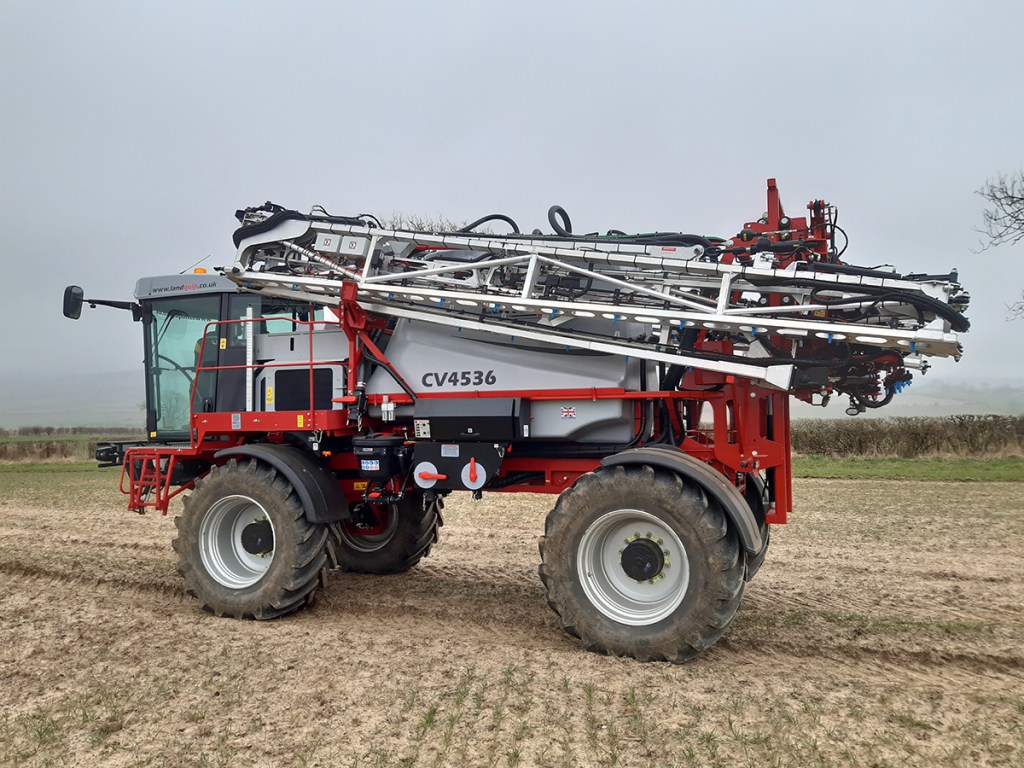
Landquip has added a new forward control Fastrac-based model to its range, with 4,000, 5,000 and 5,500-litre capacity versions available and 24m-44m AluLight booms.
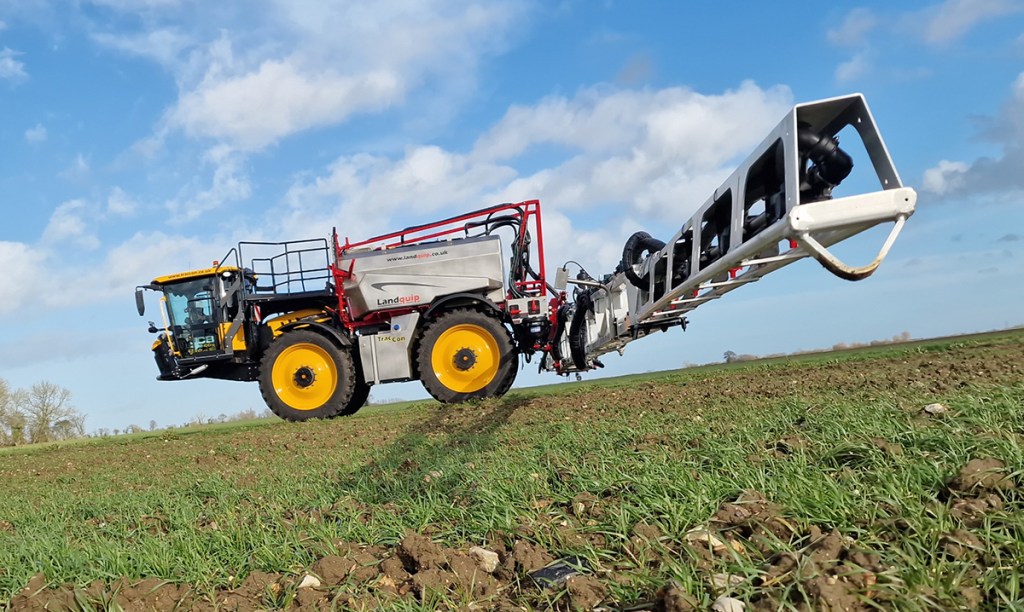
Designed to offer optimum weight distribution, the sprayer features a low centre of gravity and wide choice of specification to tailor the set up to requirements including piston diaphragm or centrifugal pumps. Sprayer iso controls linked to the VT Terminal offer technologies including auto section control, boom levelling, Flowtron PWM and control of high volume fertiliser nozzles.
Horsch Leeb
The latest Horsch Leeb PT and VT self-propelled sprayers feature an all-new cab that offers increased operator comfort. Quieter, more spacious and featuring more intuitively designed controls that have been specifically tailored to crop care, the new cab creates a productive environment that allows operators to work more effectively says the company.
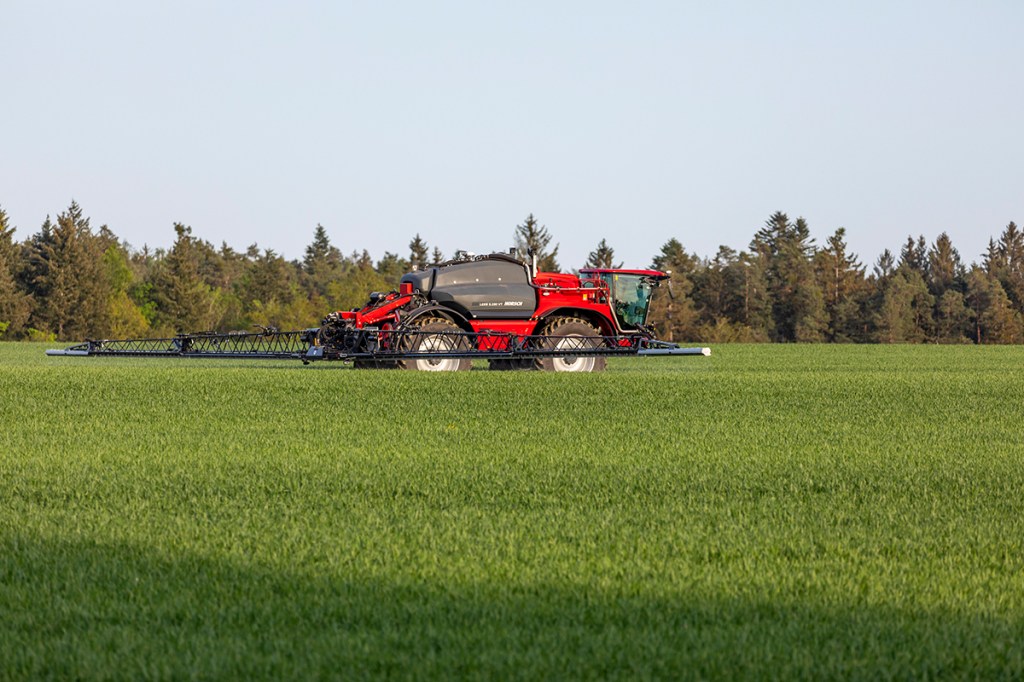
“Traditionally, self-propelled sprayers have lagged behind tractors in cab comfort. The new Horsch cab elevates operator comfort to highest levels for all-day productivity,” highlights Stephen Burcham, General Manager for Horsch UK.
Based on the latest Claas cab, the new cabin features an advanced A-column terminal as standard and new Leeb-designed armrest and joystick control systems specific for crop care applications. Category IV filtration is fitted as standard and pneumatic four-point cabin suspension is available as an option for those looking for ultimate comfort.
Knight Farm Machinery
Knight Farm Machinery’s self-propelled sprayers, which include 5,000 and 6,000-litre models at the top of the line, with boom widths up to 45m, have received multiple technology upgrades over the past year. These have been made in response, the firm says, to demands for even greater application accuracy alongside higher daily capacities. The Knight 2400 series features Perkins 175-300hp engines and hydrostatic transmissions, plus the latest Claas X11 cab.
Fluid Control Pro calculates the amount of product required for a given job and automatically manages the filling cycle. Managed via the filling area computer or in-cab ISOBUS terminal, it helps time management during filling based on entered information such as required application rate and field size, to calculate the chemical volume needed for the job.
MAXImizer PRO is a new development of the company’s established priming system which has further reduced boom pipework by 21% for faster response and minimal retained fluid.
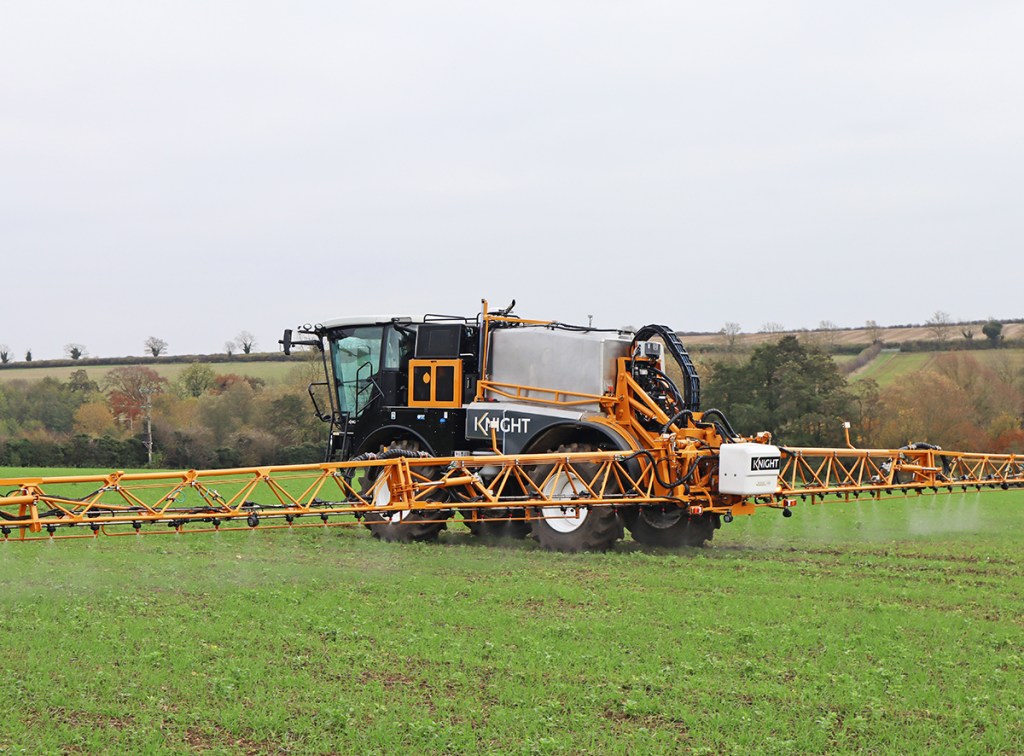
One of the firm’s most recent introductions is KINS air-actuated nozzle switching technology. A conventional nozzle body configuration means single, triple or quin nozzle bodies can be specified on the machine, with each group of four bodies incorporating a Smart Module configurable to provide section or individual nozzle switching.
Boom developments include new Knight Contour Master terrain-tracking technology for tri-fold booms (30m-45m), using four sensors across the boom to control height, tilt, levelling and variable geometry of each boom side (+/-5deg). A further 6G version of Knight Contour Master uses six sensors and the company’s own technology to manage additional variable geometry points between the inner and outer boom sections. It adds full independent automatic movement of the outer boom sections to the existing boom contour-following, providing 8deg of movement at the boom ends in both directions.
Fendt Rogator Gen 2
Cereals 2025 will be the first chance to see the updated Fendt Rogator Gen 2. The self-propelled sprayer features improved electronic, pneumatic nozzle bodies, Banjo plumbing connections and valves, and the ContiRinse system to improve accuracy and reduce downtime.
The updates are available on the latest 645, 655 and 665 Rogator with the top model boasting a 6000-litre tank capacity and 307hp engine to operate a 24 or 36 metre working width. All models in the range automatically select nozzle combinations relative to forward speed, which enables optimum nozzle pressure. This, in turn, reduces drift, which is also maintained as forward speed changes.

An improved boom levelling system on the Rogator’s OptiSonic ultrasonic boom means that spray height of 50cm can be maintained.
The latest Rogator features a category 4 cab filtration system and offers an extremely smooth ride which provides a new level of operator comfort. Improvements to boom stability will also offer greater confidence when spraying in difficult conditions, says the company.
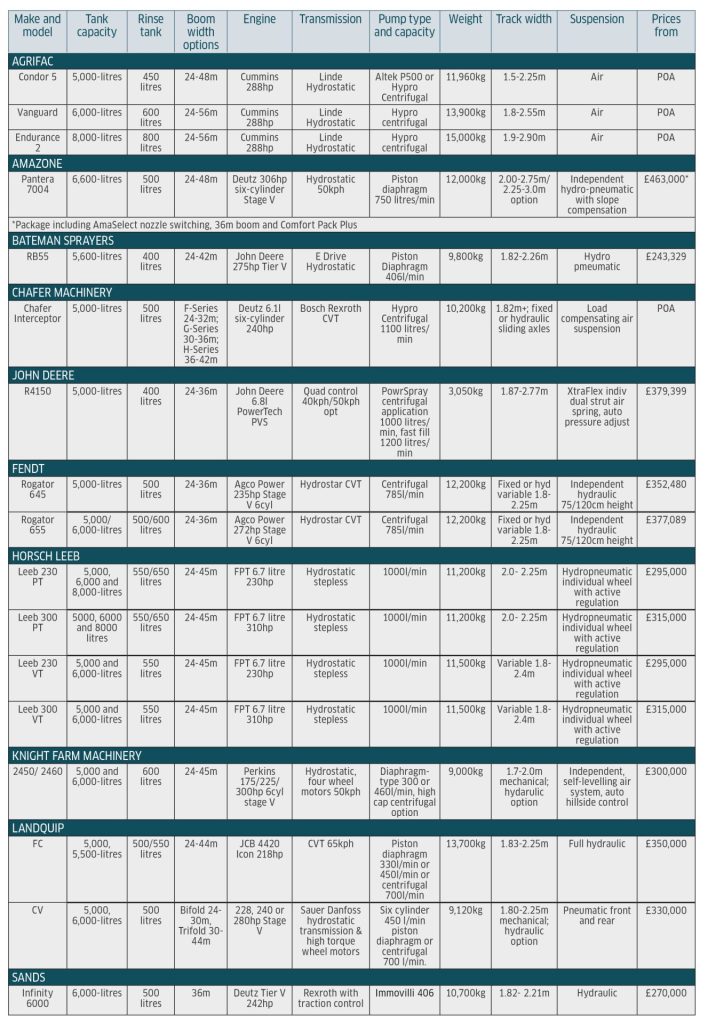
For more up-to-date farming news click here and subscribe now to profi and save.

